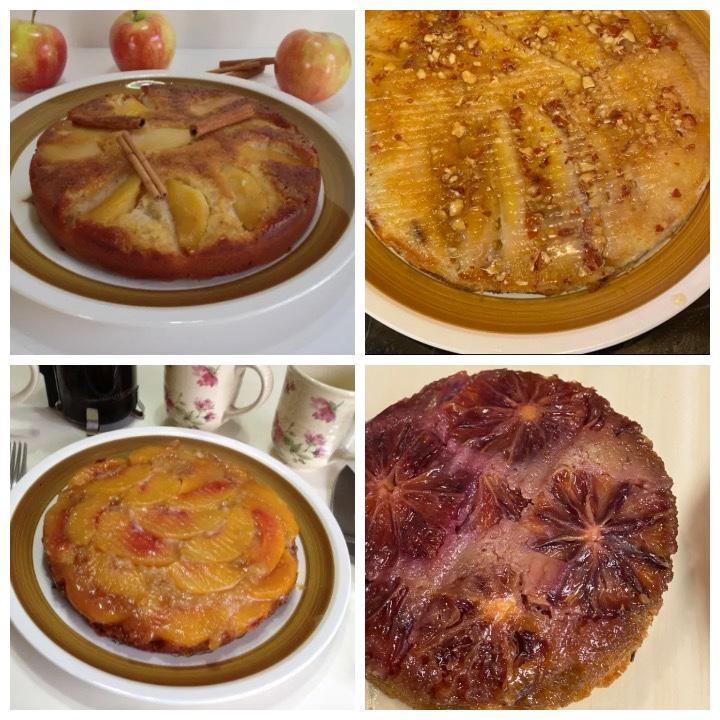
The pineapple upside-down cake is classic. But other juicy fruits like peaches, berries, bananas and even blood oranges are just waiting to take center stage.
The pineapple upside-down cake is a favorite American dessert since the roaring 1920’s.
It has been entrenched in our sweet pastry consciousness. So much so that an upside-down cake made with any other fruit seems like a mere afterthought.

An upside-down cake doesn’t require unblemished fruit that you’d want for a shortcake or tart.
No matter how wrinkled the fruit maybe or you may consider undesirable, once they’ve been caramelized and baked under batter, they’ll become syrupy and colorful, a glistening crown without further need of adornment.
An upside-down cake is easy to put together. The batter is whisked up in one bowl, the fruit is placed at the bottom of a baking dish and the batter is pour over it.
To bake one would be to follow in the footsteps of a long line of pastry chefs and cooks, who have inverted fruity desserts for thousands of years before rings of pineapple were stacked in cans.

One example is the French tradition of apple tartes renversées, created in the 19th century from apples caramelized in sugar, then baked beneath a pastry.
In the United States during the 18th and 19th century with limited access to an oven, cakes were cooked in skillets over hot coals.
A skillet of fruit would be simmered in a syrup or butter before adding the batter.
If the the cake was flipped for serving or offered directly from the skillet after being baked isn’t known, but the concept of caramelized fruit and cake was the same then as it is now.

One of the earliest upside-down cake recipes was published in 1923 in the Syracuse Herald (no longer in print).
Dole popularized pineapple as the go to fruit for a sponsored recipe contest in 1926. There were 60,000 entries of which 2,500 of them were for the pineapple upside-down cake.
The recipe for an upside-down cake is simple, there are some best practices for the most tender crumb and a fruit topping that’s sweet and deliciously yummy.
The first step is to caramelize the sugar before adding the fruit. Deeply caramelizing the sugar before adding the fruit tempers it, bringing out a mild bitterness and adding layers of nutty complexity, and it takes only a few minutes. No worries if the sugar clumps and seizes, it will melt again when the cake is being baked.
These type of cakes take longer to bake because of the moisture in the fruit, particularly stone fruit and berries, which have high water content that can make the cake soggy.

The cake surface should be well browned all over, with dark edges that yield a slight crunch. When a toothpick is inserted in the middle of the cake it should emerge without any unbaked batter.
Always let the cake cool for 10 to 15 minutes allowing the fruit and caramel to firm up a bit before inverting it onto a serving platter.
Warning though, do not let it go longer than that, or the caramel may cool and glue the fruit to the skillet or baking dish.
Just follow the recipes instructions and you will have a perfectly deliciously yummy upside-down cake to slice, serve and fall head over heals for.
More Deliciously Yummy Recipes


